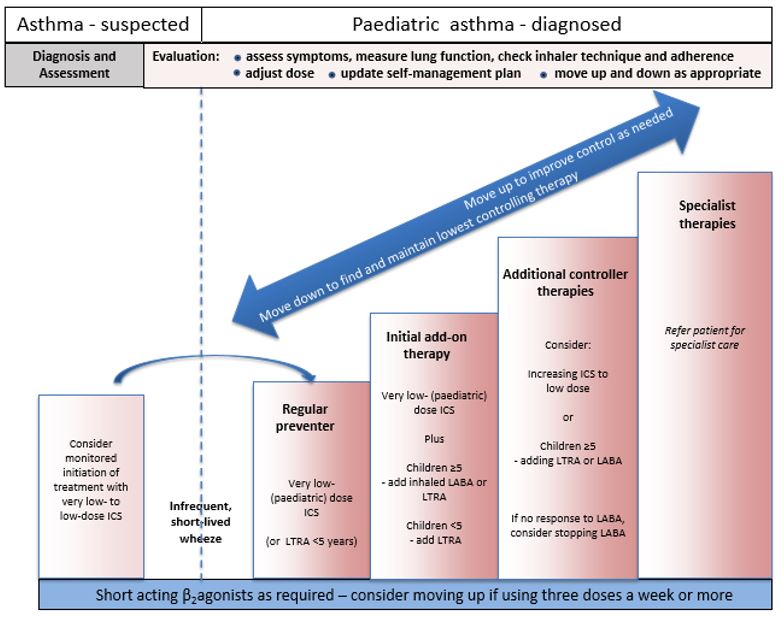The main aim of asthma management is to achieve good control of the symptoms. People with asthma are normally treated with inhaled steroids and a bronchodilator. The root problem with asthma is a constant inflammation of the airways. Steroids are given to reduce the amount of inflammation. With proper use of steroids, asthma patients can expect to see their asthma symptoms improve over time and will have fewer and fewer attacks.
The aims of asthma management are to:
- Prevent exacerbations.
- Achieve the best possible lung function.
- Minimise side effects from asthma therapy.
- Enable normal physical activity.
- Reduce the risk of a severe asthma attack.
- Control symptoms (including exercise-induced and nocturnal symptoms).
The British Thoracic Society (BTS) and Scottish Intercollegiate Guidelines Network (SIGN) jointly publish guidelines based upon clinical evidence and this guidance provides a stepwise approach to asthma treatment:

https://www.sign.ac.uk/assets/sign158_summary_of_management-adults.pdf
 https://www.sign.ac.uk/assets/sign158_summary_of_management-children.pdf
https://www.sign.ac.uk/assets/sign158_summary_of_management-children.pdf
Treatment can be stepped up or down depending upon response and should be started at the most appropriate step depending upon the severity of symptoms.
The most effective way of taking most asthma treatments is to inhale the medicine so it gets straight into the lungs. There are a variety of inhalers available and it is important that the asthmatic uses a device they are comfortable with and can use properly. You can help by demonstrating how to use it correctly. It is important that your patients understand the different types of medication they are prescribed, the reasons for using them and how they should be used. This understanding is key to adherence and symptom control. Using patient-friendly language can help overcome communication barriers.
